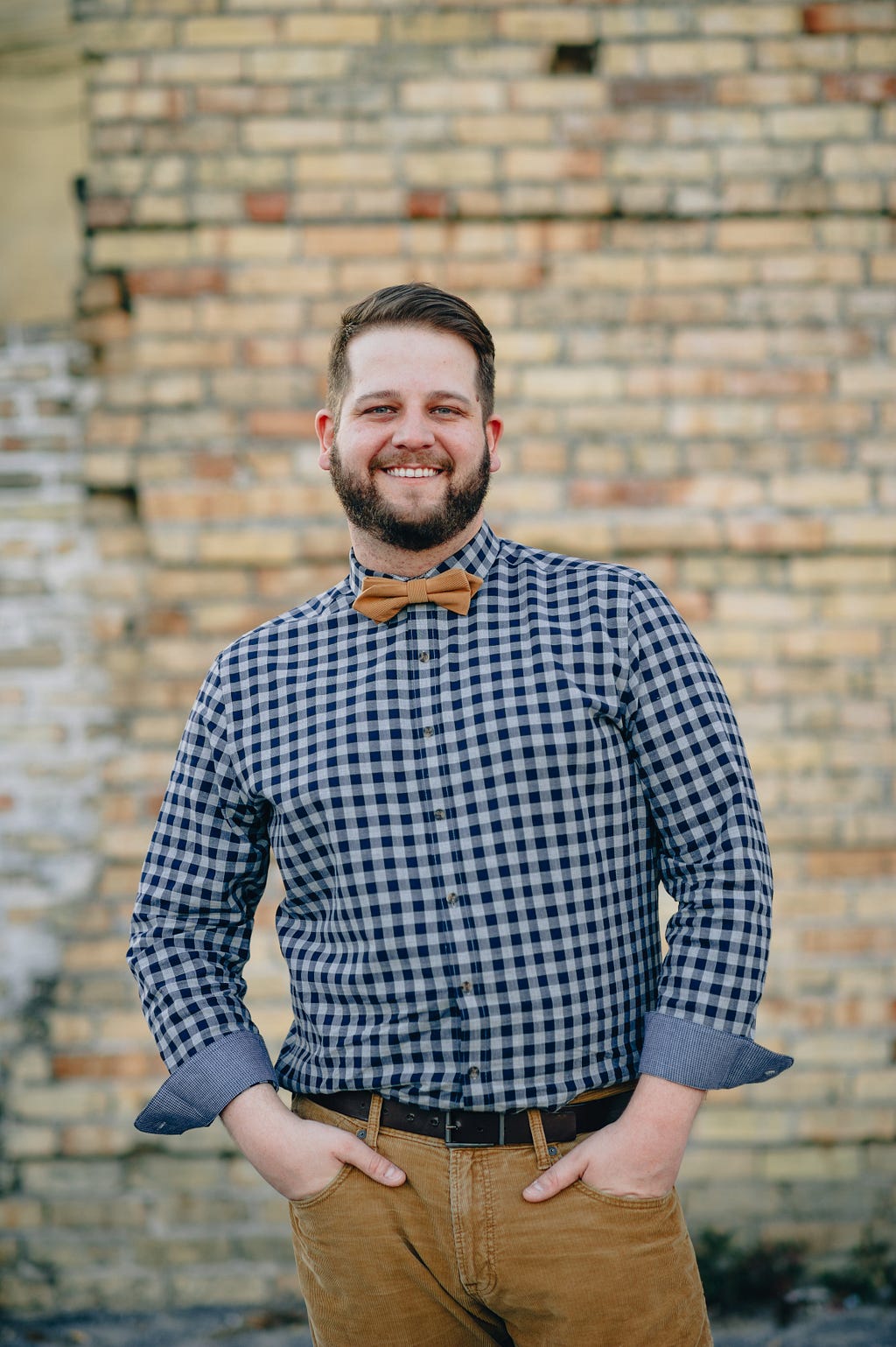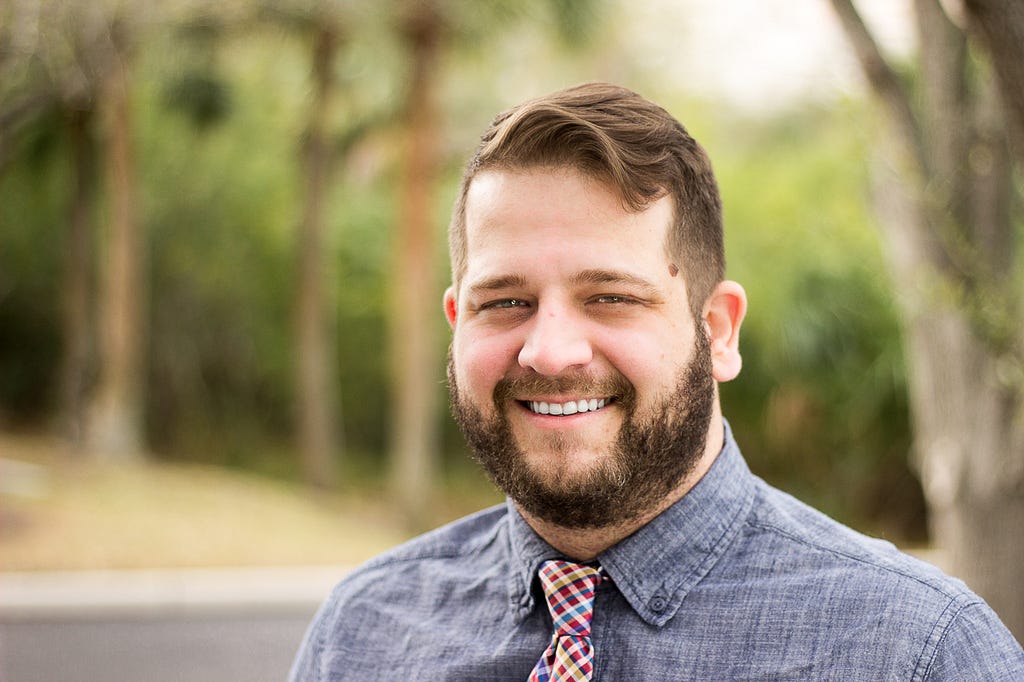
A topic that is important to me is equity and I find that there are very few institutions that serve to level the playing field. While institutions like public school and social services were established in attempt to address equitability, the execution can be muddied by personal interests. Social media has a similar ability to give everyone an equal platform to change things for the better. While social platforms provided the infrastructure to support great things like the 2011 Arab Spring, recent years have exposed vulnerabilities in our social media platforms and more so in our society. I would love to inspire a movement that would encourage people to become more civic minded, particularly in their local politics. Americans have a hard time relating the day-to-day policies that are being executed in Washington D.C. to their tangible life and that’s because many of those decisions are being made by city councils, county commissions, and state governments. If we use the tools we have to make this information more accessible and part of the national paradigm, civic involvement would be about more than just the Election Day Selfie.
I had the pleasure of interviewing Shane Ragiel, Digital Media Director at Chacka Marketing in Tampa, Florida. Originally founded as a search agency, Shane has built Chacka Marketing’s paid social media practice over the last five years, working with many national brands, startups and everything in between. Chacka Marketing has received national attention in recent years, earning a spot on the Inc. 500 for two consecutive years, along with being recognized as Interactive Marketing Awards’ Social Media Agency of the Year, and one of AdAge’s Best Places to Work in 2016.
Thank you so much for doing this with us! Can you tell us a story about what brought you to this specific career path?
My path was not a traditional one in the sense of high school-college-career. After working in a restaurant from the age of 14, I took a break from college in 2005 to begin working at a retail wine start-up that was building out its franchise company in Tampa, Florida. While there, I quickly moved up through the ranks and tried to absorb as much as I could, focusing on the business, branding development and advertising. Since it was a start-up, many of these practices had yet to be established, ensuring a 21-year-old with little business experience still had a voice.
Around 2016, I began listening to an up-and-coming podcaster and wine store owner named Gary Vaynerchuk, who brought his in-store experience far beyond the walls of his shop through a digital channel. From there it all clicked for me: even though a shop may be local, digital channels, especially those that emerged in the early-2000’s, enabled marketers to build a tribe rather than speaking at people and hoping they’d listen like traditional advertising had done in the past. Following the company becoming a casualty of the 2008 recession, I went back to school and changed my major to Advertising.
Out of college, I landed a position at a full-service, creative agency working on their newly-established social media team, focusing on content and community management. As organic distribution shifted to paid with Facebook’s 2014 reduction in organic reach, so too did my career when I accepted an opportunity to build the paid social team at Chacka Marketing.
Can you explain to our readers why you are an authority about Social Media Marketing?
It’s a combination of experience and experiences. Paid social advertising at scale has really only been around for about 10 years. In that time, I have had the unique experience of managing millions of dollars of ad spending and working with extremely well-known brands like Barnes & Noble, companies that survived the tech boom like Shutterfly, and start-up companies like our most recent, exciting ventures with Innit and ShopWell food apps, and many more.
Working with such forward-thinking brands has provided me opportunity to being amongst the first advertisers to launch Instagram ads, promoting apps on Pinterest, and working with publishers on developing betas ad types. This unique blend has enabled the rapid development of my social media marketing knowledge based on experiences.

Can you share the most interesting story that happened to you since you started this career?
In 2016, during Facebook’s Q’4 2015 earnings call, Facebook COO Sheryl Sandberg called out our client’s efforts on Instagram which Chacka executed:
“So, to share another example from a holiday, Shutterfly did a Facebook and Instagram, both a brand and direct response holiday campaign on mobile. And what they did was just beautiful pictures, but also targeting very specifically to women with specific interests, such as things like weddings and babies.”
I was not only excited for my client to receive such public praise, but it also served as validation of what my team and I were doing. This shined a very bright spotlight on Chacka’s efforts and showed that people were noticing the work we were doing.
Can you share a story about the funniest mistake you made when you were first starting? Can you tell us what lesson you learned from that?
I’d say the funniest mistake I made early in my career involved me going into a meeting and confusing it with one that was happening later on in the day. It wasn’t until I began speaking that I realized that we were discussing two totally different topics. At the time, being fresh into my career, it felt like I only just built a tiny sandcastle that was taken away with a wave, but it taught me to be prepared and understand that you need to shut up and listen to see what is happening around you.
Which social media platform have you found to be most effective to use to increase business revenues? Can you share a story from your experience?
We have gotten to the point where the platform has less impact on business revenue than the tactics an advertiser employs. Brands should view their potential customers as an audience that interacts with all the different social networks and digital channels and focus on engaging them more regardless of their preferred channel. It’s all about aligning the paid strategy with the platforms customers use, understanding where they are in the consideration path, and measuring the impact of the ads they encounter. To impact revenue, advertisers should consider the lowest hanging fruit, getting users who have explored a brand to purchase, move up to ensure the brand is part of their consideration set, and move up further to drive awareness of the brand. It is important to move in that direction as a brand shouldn’t throw the ball of awareness without a mitt to catch the demand they drive.
Let’s talk about Instagram specifically, now. Can you share 6 ways to leverage Instagram to dramatically improve your business? Please share a story or example for each.
- Align your tactics to the targeting capabilities of Instagram. On Instagram, you can reach users at all levels of the conversion funnel, from awareness in building brand recognition to retargeting in driving conversion. It is important to understand who you are speaking to and where they are in the consideration cycle. Nearly every purchase we make now has a research phase in our data-rich society and asking someone to buy something from you on your first interaction can, at times, be as intrusive as a telemarketer call. People, especially millennials, are looking to build a relationship with the brands they associate with before making a purchase.
- Measure Success. I am a firm believer that everything you spend money on, especially for a client, should have some form of measurement behind it. Success often isn’t always conversion, it can be clicks, engagement, customer sentiment, and many other indicators. Measurement is required to optimize an execution and with new features and placements coming to Instagram, your tactics from last year will definitely change in the next.
- Consider the context of your ads. Instagram is an image-first platform. Make sure to take advantage and draw attention with strong images that capture your brand and communicate with your customers. Don’t be afraid of production value as a anyone with a current iPhone can capture pristine pictures. Also, don’t forget to take advantage of Instagram Stories, which do not adhere to the curated algorithm in news feed, to distribute your content easily.
- Provide value to your customers. When you are posting on Instagram or publishing an ad, consider the value that your post will provide and ask “why?” Again, you are building a tribe on Instagram — a page that users will want to follow.
- Encourage your customers to build content. People want to share what they are doing and the products they purchase. Encourage and reward users who are willing to put your product or service in their posts and share to their friends. Word of mouth doesn’t need to be as literal as a conversation; it can often be advocacy through sharing.
- Consider your ‘Instagramability.’ Packaging, product, and placement are all impacted by the promotion of products and services on Instagram. We are seeing whole museums, like the Museum of Ice Cream, being built just for the platform; the virality of sharing a photo of your dog when they receive their Barkbox is impactful. All brands should consider how their ‘Instagramability’ can help them stand out and drive customers to experience and share in their experience of their location, service, or product.
Because of the position that you are in, you are a person of great influence. If you could inspire a movement that would bring the most amount of good to the most amount of people, what would that be? You never know what your idea can trigger. 🙂
A topic that is important to me is equity and I find that there are very few institutions that serve to level the playing field. While institutions like public school and social services were established in attempt to address equitability, the execution can be muddied by personal interests. Social media has a similar ability to give everyone an equal platform to change things for the better. While social platforms provided the infrastructure to support great things like the 2011 Arab Spring, recent years have exposed vulnerabilities in our social media platforms and more so in our society.
I would love to inspire a movement that would encourage people to become more civic minded, particularly in their local politics. Americans have a hard time relating the day-to-day policies that are being executed in Washington D.C. to their tangible life and that’s because many of those decisions are being made by city councils, county commissions, and state governments. If we use the tools we have to make this information more accessible and part of the national paradigm, civic involvement would be about more than just the Election Day Selfie.

Some of the biggest names in Business, VC funding, Sports, and Entertainment read this column. Is there a person in the world, or in the US with whom you would love to have a private breakfast or lunch with, and why? He or she might just see this if we tag them 🙂
There are plenty of conventional big names in business with whom I would never turn down a lunch, but one person I would love to meet with to pick their brain is RuPaul. It may seem completely unrelated to digital advertising and social media, but his multifaceted influence on television, music, fashion, movies and politics, through something as seemingly inconsequential as drag reminds me of how social media has influenced society at large.
Social media is the new channel on the advertising block and those in the industry have had to prove its tactics and ability within our agencies and with our clients, similar to how drag has had to prove itself as a valid artform in entertainment. RuPaul has been able to build an empire by mastering a fairly niche lane and his lifetime of experiences have provided insights that can be applied to what I do daily. I often think about his quote “What other people think of me is not my business. What I do is what I do. How people see me doesn’t change what I decide to do. I don’t choose projects so people don’t see me as one thing or another. I choose projects that excite me.” And, of course “Good luck and don’t f**k it up.”
Thank you so much for these great insights. This was very enlightening!
How to Use Instagram To Dramatically Improve Your Business, With Shane Ragiel of Chacka Marketing was originally published in Authority Magazine on Medium, where people are continuing the conversation by highlighting and responding to this story.

